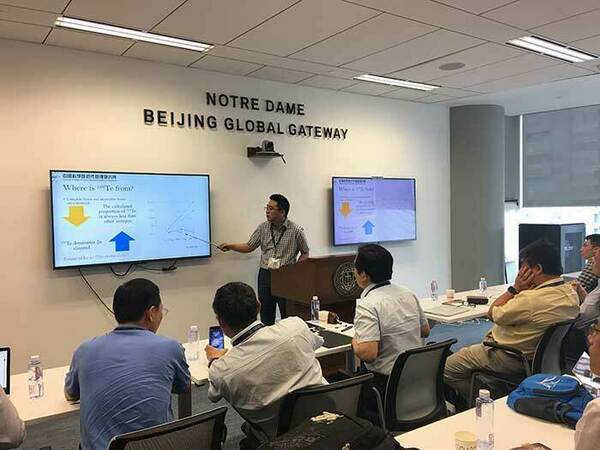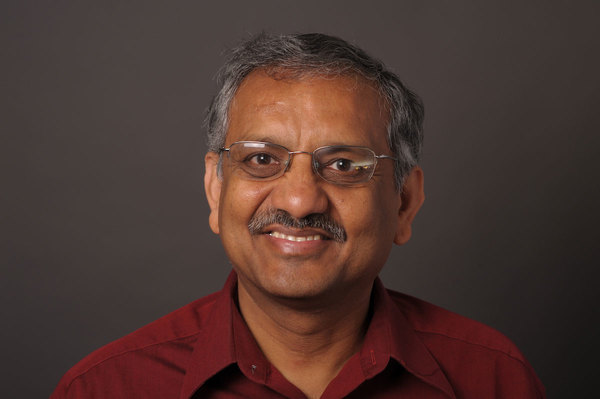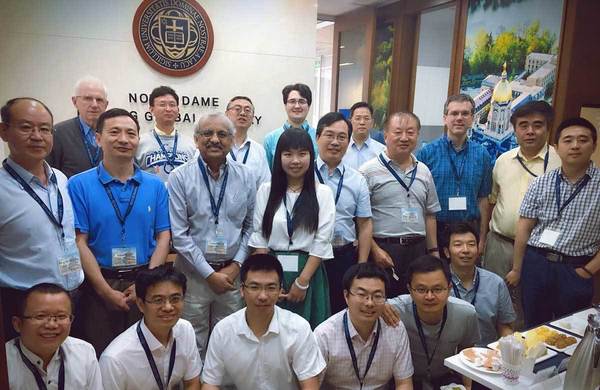
More than 20 physics scholars gathered in June to discuss current research in exotic nuclear structures during a joint event organized by the nuclear physics groups at the University of Notre Dame and Peking University.

The symposium, held at the Notre Dame Beijing Global Gateway, is the first of a planned series of Notre Dame-China symposia on nuclear physics and other fields of study to be held annually through Notre Dame International in China or at Notre Dame.
The University has a distinguished history of research in nuclear sciences, with its first particle accelerator becoming operational in 1937. The Nuclear Science Laboratory currently houses three accelerators—an FN Tandem Van deGraaff, a high-current 5MV NEC accelerator, and a new 3-MV tandem accelerator for applied nuclear physics.
 Umesh Garg
Umesh Garg
The idea for the symposium was sparked in 2012 when Umesh Garg, professor in the Department of Physics, was a PKU Fellow at Peking University in Beijing, China. While there, Garg worked with Jie Meng, a nuclear physics professor at the university, on a paper later published in Physical Review Letters. Since then, Garg and Meng had been trying to expand the collaboration between nuclear scientists at Notre Dame and those in China.
In October 2017, the Notre Dame Global Gateway inaugurated its new office in Beijing, joining its regional network of global centers in Hong Kong and Mumbai. In addition to the office space, the new facilities include a public area that can host various events. Therefore, with the sponsorship of Notre Dame International, Garg, Meng, and two other Chinese professors decided to organize the symposium at the Beijing Global Gateway.

One purpose of the symposium was to introduce Notre Dame’s research in nuclear physics to the top Chinese scholars in the field, Garg said. At the same time, it showcased the Gateway’s facilities. He hopes that nuclear physicists in both countries may be interested in collaborating with each other now that they have a good understanding of the current research being done at Notre Dame and in Chinese institutions.
“The University of Notre Dame is very strong in nuclear physics and nuclear astrophysics. It was very helpful that Professor Garg, at the beginning, introduces the past, present, and future of nuclear physics research at Notre Dame,” Meng said after the symposium. “This time, we met mainly for us to learn about each other’s work. Maybe our meeting next year will feature the fruits of our collaboration.”
Originally published by at science.nd.edu on July 18, 2018.